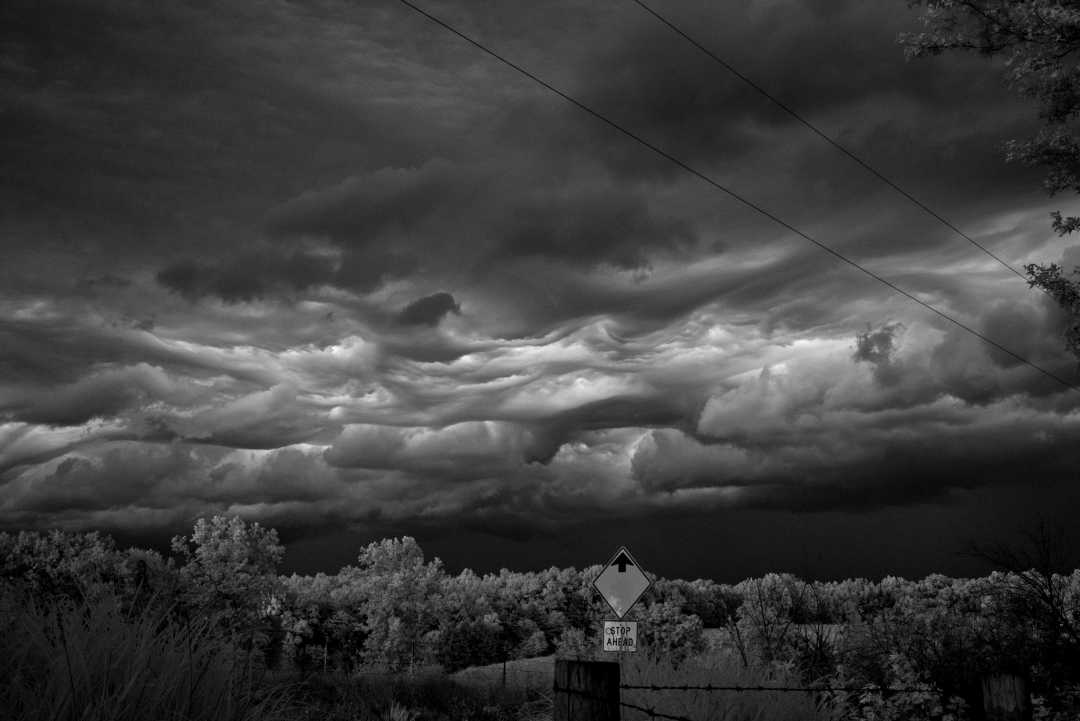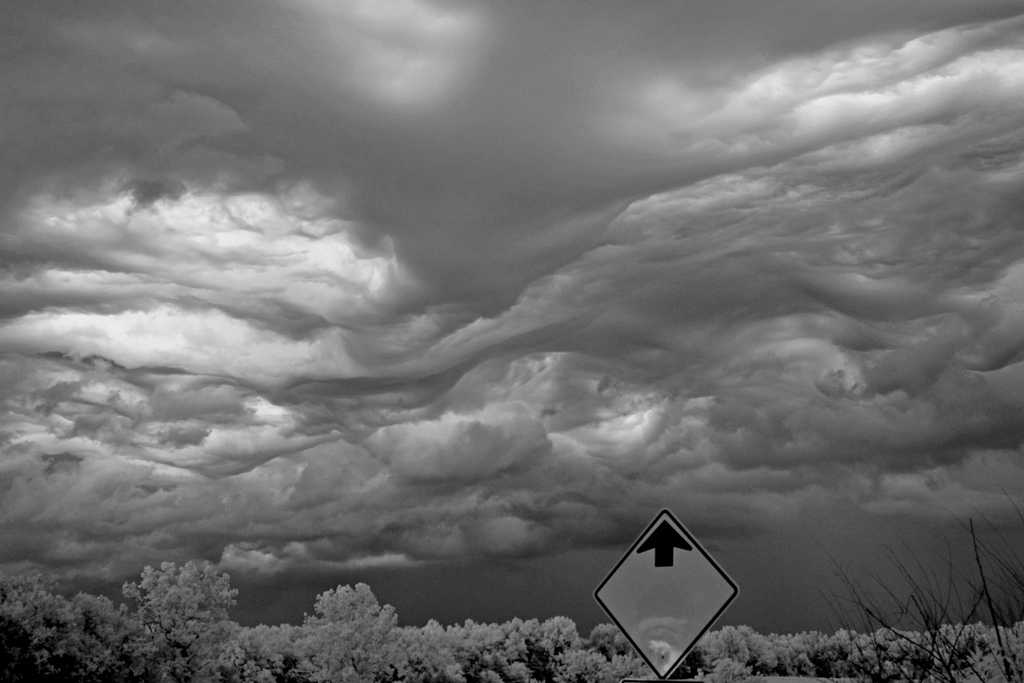ASPERITAS The CAS Cloud Vol 3
Forums › The Cloud Forum › ASPERITAS The CAS Cloud Vol 3
- This topic has 99 replies, 7 voices, and was last updated 5 years, 2 months ago by
 Hans Stocker.
Hans Stocker.
-
AuthorPosts
-
-
February 5, 2020 at 11:44 pm #419912
 Michael LerchParticipant
Michael LerchParticipantVolume 2 hit the 100 mark. A lot of fun there. Onward to another 100!
Arizona Asperitas # 301

-
February 9, 2020 at 6:01 pm #420411
 Hans StockerParticipant
Hans StockerParticipantYes Michael, let’s go to another hundre. You made a good a start for Volume 3 already.
From an older series….

Dutch Asperitas
-
February 12, 2020 at 2:12 am #420784
 Michael LerchParticipant
Michael LerchParticipantArizona Asperitas #302

-
February 17, 2020 at 2:22 am #421818
 Michael LerchParticipant
Michael LerchParticipantArizona Asperitas #303

-
February 21, 2020 at 4:40 pm #422390
 Hans StockerParticipant
Hans StockerParticipant
Gently Curved
-
February 25, 2020 at 11:00 pm #422881
 Michael LerchParticipant
Michael LerchParticipantNice composition Hans!
Arizona Asperitas#304

-
March 1, 2020 at 10:33 pm #423447
 Michael LerchParticipant
Michael LerchParticipantArizona Asperitas# 305

-
March 4, 2020 at 12:07 am #423785
 Michael LerchParticipant
Michael LerchParticipantArizona Asperitas#306

-
March 4, 2020 at 6:05 pm #423867
 Hans StockerParticipant
Hans StockerParticipantThanks Michael.

One from an old series not yet used.
-
March 6, 2020 at 1:56 am #423936
 Michael LerchParticipant
Michael LerchParticipantArizona Asperitas #307

-
March 11, 2020 at 11:59 pm #424718
 Michael LerchParticipant
Michael LerchParticipantArizona Asperitas #308

-
March 15, 2020 at 2:31 am #425139
 Michael LerchParticipant
Michael LerchParticipantArizona Asperitas #309

-
March 19, 2020 at 3:12 am #425489
 Michael LerchParticipant
Michael LerchParticipantArizona Asperitas# 310

-
March 23, 2020 at 3:54 am #425853
 Michael LerchParticipant
Michael LerchParticipantArizona Asperitas#311

-
March 24, 2020 at 1:31 am #425975
 Patricia L KeelinParticipant
Patricia L KeelinParticipantWhile taking a stroll through the archives today, I came across the photo below taken one late afternoon a few years ago. Just a hint of wave (does that count?), but here it is, nevertheless. Asperitas is such a lovely form, no matter where it rides the wind, so thank you Michael and Hans for continuing to share what rolls above your noggins in Arizona and across the pond in Holland.

-
March 26, 2020 at 8:21 pm #426254
 Hans StockerParticipant
Hans StockerParticipantThank you and yes, the waves count for me Keelin. I love the tender colors in the sky you spotted with this hint of asperitas. These long and gentle waves are exactly what attracts me in asperitas.

More Waves
-
March 28, 2020 at 10:34 pm #426487
 Daniel MitchellParticipant
Daniel MitchellParticipantMichael— feels like you live in Asperitas, AZ! I love the subtlety in “More Waves”, Hans, and Keelin, the warm color gradient in your waves photo — utterly lovely :-)
Straight up stratus outside for us today, but digging through my archives— here’s a little ditty I was lucky enough to enjoy a couple of years back, created from the top of a parking garage. In post, I deepened saturation, mid and low contrast and structure to let the colors and edges pop. Even so, the photo is almost true to light with the multiple layers front to back— the sun was above the horizon and lit up the near clouds until it hit a wall of the blue/gray in front it could not pierce. Canon 5d MkII, 235mm on EF70-200mm F2.8 (w/2x adapter), F/7.1, 1/200sec.
We printed this one out on Canvas and have it on the wall above our headboard.

-
March 31, 2020 at 7:36 am #426773
 Michael LerchParticipant
Michael LerchParticipantDaniel, Very nice Asperitas photo! Lighting of Asperitas really makes a difference.
Its my observation that the Valley of the Sun , Phoenix Az, has physical characteristics and due to its location, southeast of the Sierra Nevadas , combine to make it well situated to be a place to witness Asperitas. Weather fronts come down the Pacific coast and then try to go inland dumping most of their moisture in the mountains of California. When the fronts are strong enough, they make it over the mountains and bring their moisture to the desert. The energy to accomplish that is usually considerable , the fronts sweeping across the desert in a whip lash hurry. So the hurly burly is there , and as well, the compressed layering of cloud is often included. The Valley is like a bowl. The north and east sides being the higher elevations. So as the fronts sweep in, there are forces at work that seem to create Asperitas. I believe every front that sweeps in creates Asperitas somewhere in the Valley. I use to work near the eastern edge of the Valley and that area always had Asperitas if there was a system coming through. It was just a matter of keeping an eye for the event because the speed of systems blowing through the Valley is..quick. I’ve seen blue sky mornings, rainy afternoon and clear starry nightsky all in one day here. Of course the catch is..storms having enough umph to make it over the Sierra Nevadas. Usually they don’t. Thats why we are in a desert here. Looking at the dates of photos over the last few years,, it looks like an Asperitas event once every 6 to 8 weeks . But for some reason December and January have more than average Asperitas. The exception is during the Monsoon season where the weather comes from equatorial Pacific rather than sweeping down from Northern Pacific. I’ve noticed late November,anytime December and January once or twice in February and March with reliable Asperitas production..
Arizona Asperitas#748 This shot is of a rare May event (2019). May usually has no clouds . I consider it a blue sky month.

-
April 1, 2020 at 4:55 am #426938
 Daniel MitchellParticipant
Daniel MitchellParticipantMichael— that is an awesome insight! I live in the Pacific Northwest, so I could see how some of our big storm fronts in the early winter months would make it your way after blasting down out of the Aleutians and beginning to push inland south-southeast usually right over the top of the Willamette Valley where I live. We share weather!
Here’s another Willamette Valley sampling from September 2015 (color filters added, structure & contrast enhanced for artistic interpretation and effect.)




-
April 1, 2020 at 12:42 pm #426999
 Hans StockerParticipant
Hans StockerParticipantGreat explanation of your situation in the Valley of the Sun Michael and a;so from you daniel in the Pacific Northwest. It is obviously good cloud spotting over there. Great pictures from you both.
No hills or mountains over here in Flatland. Just dunes. Nevertheless asperitas will visit us each year some times. Here is one from last summer.

-
April 4, 2020 at 4:04 am #427517
 Michael LerchParticipant
Michael LerchParticipantGreat Asperitas shots Daniel! Yea, Arizona gets the left overs from California et al , if there is any.
Arizona Asperitas #749

-
April 7, 2020 at 7:12 am #427827
 Michael LerchParticipant
Michael LerchParticipantArizona Asperitas#750

-
April 7, 2020 at 9:20 am #427838
 Hans StockerParticipant
Hans StockerParticipant
Dutch Asperitas
-
April 11, 2020 at 2:07 am #428444
 Michael LerchParticipant
Michael LerchParticipantArizona Asperitas #751

-
April 15, 2020 at 2:39 am #428865
 Michael LerchParticipant
Michael LerchParticipantArizona Asperitas#752

-
April 18, 2020 at 11:33 pm #429274
 Hans StockerParticipant
Hans StockerParticipantAfter some days with boring blue skies this made a change. Also some raindrops but nothing got wet and the scent of petrichor filled the air.

-
April 25, 2020 at 6:43 am #429966
 Michael LerchParticipant
Michael LerchParticipantArizona Asperitas #753

-
May 2, 2020 at 3:20 am #430780
 Michael LerchParticipant
Michael LerchParticipantArizona Asperitas #754

-
May 4, 2020 at 4:59 am #430969
 Michael LerchParticipant
Michael LerchParticipantArizona Asperitas # 755

-
May 4, 2020 at 9:23 pm #431053
 Hans StockerParticipant
Hans StockerParticipantThinking about it this could also be the Wave Thread, don’t you think Michael. We sail on!

-
May 7, 2020 at 12:42 am #431312
 Michael LerchParticipant
Michael LerchParticipantHans- upside down waves
Arizona Asperitas#756

-
May 8, 2020 at 1:49 am #431448
 Patricia L KeelinParticipant
Patricia L KeelinParticipantThose wonder-ful waves sweep me off my feet, Michael, Hans, and Daniel. Sure wish they weren’t so rare around here. Just found this one from a few years back.

-
May 12, 2020 at 12:48 am #431913
 Michael LerchParticipant
Michael LerchParticipantArizona Asperitas#757

-
May 17, 2020 at 5:30 am #432528
 Michael LerchParticipant
Michael LerchParticipantArizona Asperitas #758

-
May 23, 2020 at 3:02 am #433273
 Michael LerchParticipant
Michael LerchParticipantArizona Asperitas#759

-
May 27, 2020 at 12:58 am #433699
 Michael LerchParticipant
Michael LerchParticipantArizona Asperitas#760

-
May 30, 2020 at 9:03 am #434130
 Hans StockerParticipant
Hans StockerParticipantNice composition in Arizona Asperitas#760 Michael. Next one was taken in a hurry a few days ago. I did not have time to change lenses not expecting this when I stepped outside. Nevertheless I did have my camera with me so used the wide angle that was mounted.

-
May 31, 2020 at 1:07 am #434176
 Michael LerchParticipant
Michael LerchParticipantIts great when normal life gets interrupted by a cloud phenomena! Nice capture Hans!
Arizona Asperitas#761

-
June 3, 2020 at 3:31 am #434483
 Michael LerchParticipant
Michael LerchParticipantArizona Asperitas#762

-
June 9, 2020 at 11:42 pm #435416
 Michael LerchParticipant
Michael LerchParticipantArizona Asperitas #763

-
June 12, 2020 at 11:07 pm #435912
 Hans StockerParticipant
Hans StockerParticipantThanks Michael. It is always a joy when something “different” in the sky is happening. It makes my day.
From last year:

Eyebrow Raising Asperitas
-
June 14, 2020 at 1:52 am #436060
 Michael LerchParticipant
Michael LerchParticipantArizona Asperitas #764

-
June 17, 2020 at 2:50 am #436494
 Michael LerchParticipant
Michael LerchParticipantArizona Asperitas#765

-
June 23, 2020 at 12:04 am #437618
 Michael LerchParticipant
Michael LerchParticipantArizona Asperitas#766

-
June 28, 2020 at 11:23 pm #438321
 Michael LerchParticipant
Michael LerchParticipantArizona Asperitas #767

-
July 2, 2020 at 3:41 am #438779
 Michael LerchParticipant
Michael LerchParticipantArizona Asperitas #768

-
July 3, 2020 at 9:59 am #438932
 Hans StockerParticipant
Hans StockerParticipantAll very gentle waves of asperitas Michael. Here is one that looks like the skin of some reptile. What do you think. Does it belong to this thread?

Scales
-
July 4, 2020 at 12:57 am #439004
 Michael LerchParticipant
Michael LerchParticipantHans,,A similar type cloud can be seen in my photo #750. The texture of the clouds, takes away from the upside down tossing and turning of the Asperitas. So your photo belongs in Asperitas imho.. And yes, an incredible Asperitas event Dec 3rd 2019 traversed overhead very low. Seemed I could almost hear it. Lasted maybe 15 minutes and I didn’t catch it from the beginning. It was a softly lit Asperitas Undulatus event.
Arizona Asperitas#769

-
July 7, 2020 at 3:53 am #439316
 Michael LerchParticipant
Michael LerchParticipantArizona Asperitas#770

-
July 12, 2020 at 12:34 am #439954
 Michael LerchParticipant
Michael LerchParticipantArizona Asperitas #771

-
July 12, 2020 at 4:00 pm #439985
 Hans StockerParticipant
Hans StockerParticipantThanks Michael. Soem of your latest also show lacunosus imho and he gentle waves as well.

B&W Asperitas
-
July 16, 2020 at 12:48 am #440384
 Michael LerchParticipant
Michael LerchParticipantArizona Asperitas #772

-
July 23, 2020 at 12:57 am #441114
 Michael LerchParticipant
Michael LerchParticipantArizona Asperitas #773

-
July 30, 2020 at 1:51 pm #442134
 Hans StockerParticipant
Hans StockerParticipant
Two Days Ago
-
July 30, 2020 at 8:33 pm #442181
 Ruth QuistParticipant
Ruth QuistParticipant Wondering if some of this cloud activity could have a bit of Asperitas. Thanks for any assistance.
Wondering if some of this cloud activity could have a bit of Asperitas. Thanks for any assistance. -
July 30, 2020 at 11:38 pm #442191
 Michael LerchParticipant
Michael LerchParticipantRuth Quist.. One way to determine if what you see is Asperitas is to look at it upside down. The up drafts and rolling clouds are a lot more apparent. The darker clouds in your photo suggest they are lower than the brite alto-cumulus in upper center. Its my experience that lower cloud gets aspirated or demonstrates the phenomena. Therefore i think your photo captures the asperitas phenomena. Its perhaps a thinner show of it but the characteristics are there.
Below is shot that too, is not of a clear and easy Asperitas event. This shot is of small area off from a more serious Asperitas event . Still I think its Asperitas with some of the slightest of characteristics.

-
July 31, 2020 at 1:21 am #442199
 Ruth QuistParticipant
Ruth QuistParticipantMichael, you have an exceptional collection of Asperitas cloud formations shown in this forum. I was so hoping that I had a chance to see this cloud event. Thanks for the pointers, especially looking at the picture upside down.
-
July 31, 2020 at 6:35 pm #442281
 Hans StockerParticipant
Hans StockerParticipantLast week I spotted some skies with a bit of the same as you both (Ruth and Michael) spotted in the last two posts. For me they all are examples of asperitas. Small areas but nevertheless the characteristic irregular undulations of asperitas are there.

-
August 3, 2020 at 12:51 am #442472
 Michael LerchParticipant
Michael LerchParticipantSmall area asperitas give the opportunity to see what is going on above the undulations. Chaos comes to mind. The up drafts pulling cloud segments up and the scatter of clouds show that flying thru an Asperitas event may not be a good idea.
Arizona Asperitas #775

-
August 3, 2020 at 9:36 am #442509
 Hans StockerParticipant
Hans StockerParticipantYou may be right Michael about the chaotic nature of asperitas events. Your last one shows the deceiving calm wavy structure. here is another example of a small area event.

-
August 6, 2020 at 1:03 pm #442928
 Hans StockerParticipant
Hans StockerParticipant
Capricious
-
August 8, 2020 at 4:55 pm #443130
 Hans StockerParticipant
Hans StockerParticipant
Contrasts In The Sky
-
August 9, 2020 at 10:28 pm #443226
Frank Le Blancq
ParticipantNice asperitas time lapse In Maine USA
Ciel d'#Asperitas capturé depuis le mont #Cadillac dans le #Maine aux Etats-Unis ce 5 août. Timelapse par Aidan Alwan via @severeweatherEU #usa #mewx pic.twitter.com/NKzODh1udV
— Keraunos (@KeraunosObs) August 6, 2020
-
August 12, 2020 at 12:49 am #443474
 Michael LerchParticipant
Michael LerchParticipantThank You Frank for the cool video!
Arizona Asperitas#776

-
August 15, 2020 at 4:34 am #443823
 Michael LerchParticipant
Michael LerchParticipantArizona Asperitas #777

-
August 22, 2020 at 12:34 am #444449
 Michael LerchParticipant
Michael LerchParticipantArizona Asperitas $778

-
August 22, 2020 at 8:31 pm #444511
 Dave LochhaasParticipant
Dave LochhaasParticipantHello All, I’m Dave from central Missouri, USA. This is my first post to a forum and actually I’m a little baffled on how to do this.
I almost exclusively shoot clouds with an infrared converted camera. I love the way that infrared light illuminates clouds providing enhanced contrast to what visible light illumination provides. This photo is in monotone but I frequently leverage my camera sensor’s response to invisible IR light and produce colors very different than what is seen with visible light.
On July 7, 2020, at 18:10 CDT, I witnessed 25 minutes of the writhing chaos of asperitas clouds from my rural home. I shot over 140 photos with my infrared converted camera. This photo is from early in the sequence.

-
August 22, 2020 at 8:38 pm #444512
 Dave LochhaasParticipant
Dave LochhaasParticipantThis photograph was shot several minutes after my previously posted photo. The fun was really ramping up at this time. I was practically giggling, it was so overwhelming.

-
August 22, 2020 at 10:38 pm #444517
 Hans StockerParticipant
Hans StockerParticipantWow Dave, welcome here …. and these are astonishing pictures of asperitas. The infrared reveals a really turbulent and wild cloudscape. I remember that on on the 3rd of August a picture of yours was CAD. It was cirrus and also taken in infrared accompanied by a great explanation of the used method. The extra contrast the infrared gives is amazing. This is different than to try to enhance contrast with all the tricks LR provides. I hope to see more of these from you.
Hans
-
August 23, 2020 at 12:11 am #444522
 Ruth QuistParticipant
Ruth QuistParticipantDave, you have taken some exciting, not to mention moody pictures. Keep them coming. These forums are great fun to share pictures and support each others creations. Asperitas are one of the most thrilling clouds to see and photography. A rarity for me. Looking forward to more of your entries.
-
August 23, 2020 at 2:36 am #444525
 Michael LerchParticipant
Michael LerchParticipantGood show Dave! yes, Asperitas does overwhelm. I can’t help feeling very special to witness a good Asperitas event. .always a smile that is impossible to remove from my face. Your use of IR is interesting! Canon’s 6D Is sensitive into the IR, beyond most other digital cameras and is a favorite for astronomy photogs for that reason. I have one and used the IR advantage mostly in B&W photography. Like you say, the contrast can make the clouds really pop out from the background.
Arizona Asperitas #779

-
August 24, 2020 at 12:59 am #444581
 Patricia L KeelinParticipant
Patricia L KeelinParticipant~~~ Wow!! Love the recent additions to this fantastic wild ride that Michael and Hans keep rolling. Beautiful drama captured, Dave, (positively enhanced by the B&W/Sepia tones), and a mesmerizing video, Frank.
As Michael notes, witnessing Asperitas events brings a special feeling (like an “E-Ticket Ride” at Disneyland back in the ’50s!). I must add that even just seeing them online here brings delight to the day. So many thanks to all contributors above for sharing.
-
August 27, 2020 at 4:02 am #444982
 Michael LerchParticipant
Michael LerchParticipantArizona Asperitas#780

-
August 29, 2020 at 6:40 pm #445186
 Dave LochhaasParticipant
Dave LochhaasParticipantThanks for the welcome to the forum. This is such an inspiring group of people. It truly made my day to have my first two contributions so warmly received.
I’ve been comparing the photos I submitted to how they were presented in this forum. My photos as seen here are considerably smaller in size, have considerably less resolution, and are considerably more jpeg compressed than they were when submitted. I am also guessing that with something that can be as detailed as asperitas clouds a short view may be better than a long view. My big fat photos need to go on a diet.
The following two photos are also from the July 19th asperitas event. I have cropped these photos, reduced them to 1200 x 800, and changed the jpeg compression to 90% quality, This resulted in an overall size around 200 Kb.
So let’s see what happens. I welcome all the tips, tricks, and critiques anyone has to offer. Thanks.

-
August 31, 2020 at 5:07 am #445330
 Michael LerchParticipant
Michael LerchParticipantGreat show you had in Missouri there Dave! ..
In very general terms..I reduce my photos from full size down to about 4″ X 7″ (postcard) size or 450 kb in size to get accepted to post here. The exception is the vertical shots which CAS allows to be larger. Anyway you will figure it. Yes you end up with an original and then a CAS smaller version of all your good stuff.
Arizona Asperitas#781

-
September 2, 2020 at 6:53 pm #445618
 Dave LochhaasParticipant
Dave LochhaasParticipantThanks, Michael, I think I’m now heading in the right direction on processing at a smaller scale. My first photos were a whopping 2048 x 1368 when submitted.
I like your photo, Arizona Asperitas#781. There seems to be some orderly structure to the chaos that I’ve seen in some of my photos. It’s hard for me to imagine how the different water vapor densities stay together in an asperitas cloud formation without becoming a homogeneous mix in all the turmoil.
This is the last photo (infrared photography) of my July 19th asperitas encounter. I took it as I retreated to my garage when large drops of rain began to fall. This is a view to the east. The dark area of thunderstorms that had been sliding by to the south had widened and was approaching my backside from the west. The asperitas clouds were losing structure and drifting to the northeast. Winds were still gusting but had become northerly, different than the earlier random gusts from every direction. It took another half hour for the transition to full thunderstorm.

-
September 3, 2020 at 1:19 am #445653
 Michael LerchParticipant
Michael LerchParticipantNice shot Dave. Its a matter of timing. I see mostly asperitas undulatus in the Phoenix Arizona area. So ,yes, there is more of a structure to what I witness. Its a matter of timing like any wave activity. To me, Asperitas is upside down wave activity…like being under water and watching a wave break as it approaches the beach. It appears the wave goes Up and rolls along until it crests and comes apart. Pictures capturing what goes on above the asperitas show many rising columns of cloud.It is interesting to wonder when an asperitas events evolves to fractus, where the line is drawn.
Arizona Asperitas #782

-
September 3, 2020 at 6:30 pm #445730
 Dave LochhaasParticipant
Dave LochhaasParticipantI’ve gotten off track here and am having to rethink what I’ve been calling Asperitas cloud features. Today’s Cloud-a-Day of Stratocumulus lacunosus makes it clear that that has been a dominant feature in what I have been calling an Asperitas event.
It is likely that only a few of my photos from the 140 I shot (in IR photography) over 25 minutes during the July 7, 2020, event are of Asperitas clouds. Checking against the International Cloud Atlas I see that most of my photos do not fit the description and do not belong in this part of the forum.
On the plus side I witnessed an event that is burned in my brain but has still not completely coalesced into understanding.
The first photo may or may not contain a small patch of Asperitas. The second photo is also from the event and was solidly identified by today’s CAD, It has features typical of many of my photos on that day.
I have not located a description of how Asperitas clouds are formed and I am most curious if their existence is related in some way to how Stratocumulus lacunosus are formed.


-
September 4, 2020 at 7:17 am #445775
 Michael LerchParticipant
Michael LerchParticipantDave..I can only suggest that there exists Aperitas Laconosus. I’ve witnessed such a development on many an occasion, usually at the end of an Asperitas event. Again. its a timing issue. What actually is the physical cause, the physics responsible for the development we call asperitas? My rough understanding is ..a layer of stratus is acted upon by winds above the stratus. The speed of the winds and the direction in relationship to the speed and direction of the stratus I don’t recall exactly. Undulatus is caused by winds 90 degrees (?) opposed to the direction of the stratus. Since there is asperitas undulatus there is suggested ,wind speed has much to do with asperitas. Another thought is volume..how much space a blast of wind fills.
The lacunosus phenomena is attributed to different temperature layers of atmosphere descending and rising into each other. Cold air condenses the moisture out of the atmosphere and warm air absorbs the moisture back into atmosphere. So the cloud pattern you see is the cold air descending and the holes are the warm air rising..The problem is the holes in asperitas have visible clouds but they are in column shape and very ragged, due to wind. What im suggesting , and it is only my opinion, is that the lacunosus we see near the end of an asperitas event may be in optics only, similar to an lacunosus we see at cirrus or altcum heights,but the physics could be different Again, Aperitas does mean mixed up, indicating a multi-directional stirring of the atmosphere. So the thought that asperitas lacunosus signals a equilibrium approaching, a calming down of the asperitus atmosphere seems possible. The one thing bears mentioning is that the lacunosus I’ve photographed near the end of an asperitas event is usually almost ,f not directly, overhead. Seeing the wavy nature of asperitas is difficult when overhead and easier when seen at an angle or farther away.
So thats my 2 cents based on what little I understand about a complicated physical event that happens to clouds. I will say that I’ve photographed Asperitas Radius. Posted those pics a long while ago. Asperitas Translucidus might be applied to #773, #778 and #780 above.Point is, there can be many types of Asperitas and like a lot of clouds there are phases of development and decomposure that take the phenomena thru various varieties. There is much study on inter-actions of various layers of differing temperatured liquids and gases. Asperitas seems to me a challenge to those in that field of study.
anyway here is a “asperitas lacunosus” shot that was close by.
Arizona Asperitas# 781

-
September 8, 2020 at 10:32 pm #446155
 Hans StockerParticipant
Hans StockerParticipantGreat Asperitas lacunosus Dave. The infrared makes it even more dramatic. And I like your thoughts on asperitas Michael. Dave: you cn find more examples of asperitas lacunosus when you go the gallery and select on these classifications. You will find them all. Altocumulus and stratocumulus as well.

No Holes -
September 12, 2020 at 3:33 am #446607
 Michael LerchParticipant
Michael LerchParticipantArizona Asperitas# 782

-
September 14, 2020 at 7:11 pm #446797
 Dave LochhaasParticipant
Dave LochhaasParticipantIn my last posting I succumbed to a moment of doubt about ID’s I had provided for several of my photos. Thanks to Hans for his insight and many thanks to the members posting in the Cloud Identification Help forum.
This image is composed from two photos stitched together. Asperitas clouds were just beginning to emerge on the edge of the thunderstorm line to the south on July 19, 2020, in central Missouri.
Infrared photography, false color.
This image can be seen in high resolution on my Flickr page: https://www.flickr.com/photos/davelochhaas/50341602273/in/album-72157715288024491/

-
September 16, 2020 at 10:54 pm #446966
 Hans StockerParticipant
Hans StockerParticipantVery impressive and dramatic capture of Asperitas Dave. The infrared emphasizes the drama very well. Next one is a lot less dramatic, but the B&W approach is another way to enhance the drama a bit.

-
September 18, 2020 at 6:31 am #447052
 Michael LerchParticipant
Michael LerchParticipantArizona Asperitas#783

-
September 21, 2020 at 3:35 am #447213
 Michael LerchParticipant
Michael LerchParticipantArizona Asperitas #784

-
September 24, 2020 at 1:00 am #447446
 Michael LerchParticipant
Michael LerchParticipantArizona Asperitas #785

-
September 29, 2020 at 12:14 am #447834
 Michael LerchParticipant
Michael LerchParticipantArizona Asperitas #786

-
October 5, 2020 at 4:46 am #448252
 Michael LerchParticipant
Michael LerchParticipantArizona Asperitas #787

-
October 5, 2020 at 8:04 pm #448316
 Hans StockerParticipant
Hans StockerParticipant
A Week Ago
-
October 8, 2020 at 3:24 am #448560
 Michael LerchParticipant
Michael LerchParticipantArizona Asperitas #788

-
October 8, 2020 at 5:28 pm #448648
 Dave LochhaasParticipant
Dave LochhaasParticipantMichael, I appreciate your continuing posts. This last Saturday, 10-03-20, about noon, I was traveling through a seven mile stretch of the Missouri River floodplain when I looked up and saw one of your Asperitas images. Your photos have apparently found a place in the pattern recognition of my brainware. This was amazing for me,
I’ve looked through your past posts and what I saw is very similar to Arizona Asperitas #776 in both appearance and color. I have not witnessed a view such as this before. Unfortunately, I was driving two-lane blacktop with no shoulder and no pull-offs and the only camera I had with me was a cell phone buried in my pants pocket.
Early in Vol 3 you spoke of the Asperitis you see in the Valley of the Sun and described its topography. Daniel did the same about Willamette Valley. I was in the Missouri River valley. I was heading west from an area that had light showers toward the thinning back edge of the front that was moving west to east. Here the flood plain is about a mile wide, completely flat, and is bound by river hills on both sides.
-
October 8, 2020 at 6:07 pm #448654
 Dave LochhaasParticipant
Dave LochhaasParticipantThis is another view from the Asperitas event I witnessed on 2020-07-19. The photo was taken with my infrared converted camera with the false color from the camera’s sensor.

Not only does an infrared converted camera provide cloud images with high contrast it also has other idiosyncrasies that contribute to the view in ways that truly make an experience that is vastly different than what can be seen in visible light.
The “Stop Ahead” sign has a red octagon in the center when seen in visible light. It is absent in this photo, apparently the paint being transparent to infrared. Also on this sign can be seen the IR reflection from a dusk-to-dawn lamp about 200 yards distant. This lamp had come on because it sensed a low level of visible light due the increasing cloud cover from the storm.
In the natural world the greatest reflector of IR is the chlorophyll of living plants. In bright sunlight tree leaves appear white in a photo, the limbs and trunk are usually very dark. Here, the trees appear blue-gray because of the low level of sunlight illuminating them.
In fact, chlorophyll reflects IR so well I use green grass to set the white balance on my converted camera.
-
October 9, 2020 at 4:30 am #448671
 Michael LerchParticipant
Michael LerchParticipantDave, The thing about IR photography that always confuses me , is that you are photographing heat (brite) and lack of heat (dark). As you point out , normal dark can be brite if its “hot” as in the stop sign. Trees and grass are living things so they put off heat and of course are warmed by sunlight. Clouds exist because of heat. The more sunlit areas of cloud are going to be warmer so should be brite..which is a expected observation with visible wavelengths..So , with some objects the recorded image can be reverse of visible light and other objects the recorded image can be close to visible light image. Thats just for starters. Recording reflected heat or recording heat made by the object..in sunlite or in shadow,,I have enough trouble just dealing with visible light. I don’t know how you do it.
Terrain effects cloud formations. Hills and valleys can stir the atmosphere. Whats really weird is Asperitas over Antarctica or over Greenland. The one area I haven’t seen a pic of Asperitas over is…an Ocean..I m not saying Asperitas doesn’t happen over ocean,,Im just saying I haven’t seen a pic of it over ocean. Anyway, Im enjoying your IR photography. Can I ask what format is your camera and lens that you use?
Arizona Asperitas #789

-
October 9, 2020 at 7:45 pm #448754
 Dave LochhaasParticipant
Dave LochhaasParticipantHi Michael, thanks for the questions. It is important to understand how a photo is produced from an infrared converted camera to understand what one is seeing in the photo. I’ve provided some insight previously but I left out what you asked about even though it was a question I had when I started with IR photography.
More people have seen photos from thermal imaging cameras than from IR converted cameras. The two are very different from each other but it is easy to think they are similar. A thermal imaging camera uses a specially designed sensor that “sees” only in the longer wavelength/lower frequency Far Infrared spectrum. Far Infrared has much more energy than Visible Light and Near Infrared. I’m not sure how this works to produce an image but generally, in the end, colors are assigned to temperatures.
An infrared converted camera is a camera with a sensor designed for visible light. The design of the sensor produces an image that is flat across the spectrum of red through violet. In order to do this the sensor has a sensitivity roll-off into ultraviolet at one end and into near infrared at the other end. The sensor has an infrared blocking filter to keep the near infrared (a red cast) out of the image. One can purchase a UV blocking lens filter to keep out the UV (a violet cast).
The conversion to IR photography requires the removal of the IR blocking filter and the installation of a visible light blocking filter at the sensor. Because the sensor is designed for visible light it only has a sensitivity to the roll-off in Near Infrared and can not “see” anything close to the Far Infrared spectrum. Near Infrared images do not show temperature any more than Visible Light shows temperature.
However, to either confuse or clarify, visible light is given a temperature value. Light bulbs are often rated this way, so is white balance, both using the Kelvin scale of temperature. Blue light is called cool and yellow light is called warm. This corresponds to the energy levels across the electromagnetic spectrum. Can it be said that visible light is called such because it is a range of temperatures mapped to the color we see by our personal senses?
Color created by the sensor of my IR converted camera is called false color. I guess it could be called false temperature, too. I believe the sensor maps the intensity (energy level?) from the RGB elements of the direct and reflected electromagnetic radiation that is within its range. This is the reality of the Asperitas clouds in my images, not the color or temperature but the tone..
Wow, that was a long row to hoe. I hope I’m not confused or confusing somewhere in my explanation.
I photographed the Asperitas clouds with my IR converted camera, a Fujifilm X-T10 with an XC15-45mm F3.5-5.6 OIS PZ Fujifilm lens. The sensor type is CMOS II and the sensor format is APS-C. The effective pixels is 16 Mpx. The conversion filter over the sensor cuts off visible light smaller than 665nm wavelength. My IR conversion was done by lifepixel.com and they have a vast amount of information at their website.
-
October 14, 2020 at 3:00 am #449251
 Michael LerchParticipant
Michael LerchParticipantGreat Info Dave! Thanks! Yea all “light” is energy. Our eyes/brains see only a portion of it. Shooting IR takes a lot of trust!
Arizona Asperitas #790

-
October 14, 2020 at 3:22 pm #449341
 Hans StockerParticipant
Hans StockerParticipantI am sorry when I react too nerdy Dave, but I read in your explanation “Blue light is called cool and yellow light is called warm. This corresponds to the energy levels across the electromagnetic spectrum.” The first of these two sentences is right but unfortunately for the second one it is the other way around. Blue light has a higher energy and red light a lower energy.
What’s confusing is that in normal language a red color is called warm and a blue or white color called cold. The way we speak about this is not related to real temperature or energy. The energy of a photon is directly proportional to its frequency or inversely proportional to its wavelength. In contrast with this fact is the color temperature of a light bulb called cool when the temperature is that high that the body radiates a blue / white light and called warm when the body radiates red light. Quite confusing in my opinion.
Anyway this nerdy detail does not harm your nice explanation of ir photography. So many thanks for that. The results of your ir images are amazing and its dramatic results seem fit for a black and white conversion.
-
October 14, 2020 at 5:23 pm #449368
 Dave LochhaasParticipant
Dave LochhaasParticipantThanks, Hans, for noting my error. I don’t know when or why I started carrying around that incorrect knowledge in my head. You straightened out and filled in my explanation and I’m sure everyone appreciates it as it now makes more sense.
Generally speaking, I prefer the company of nerds.
This is the previous IR image I posted from the Asperitas event I witnessed on 2020-07-19. It is shown here in black and white monotone without the distraction of false color.

-
October 14, 2020 at 5:55 pm #449379
 Hans StockerParticipant
Hans StockerParticipantThanks Dave. Very nice to see a B&W version of your asperitas sky. I love the capriciousness of these clouds. Next one is very different. In stead of capricious the lines are gentle. Still asperitas.

-
October 16, 2020 at 4:44 am #449631
 Michael LerchParticipant
Michael LerchParticipantArizona Asperitas #791

-
October 16, 2020 at 1:31 pm #449668
 Hans StockerParticipant
Hans StockerParticipantIt seems Volume 3 has to end with this one from an older series.

French Asperitas
-
-
AuthorPosts
- You must be logged in to reply to this topic.
















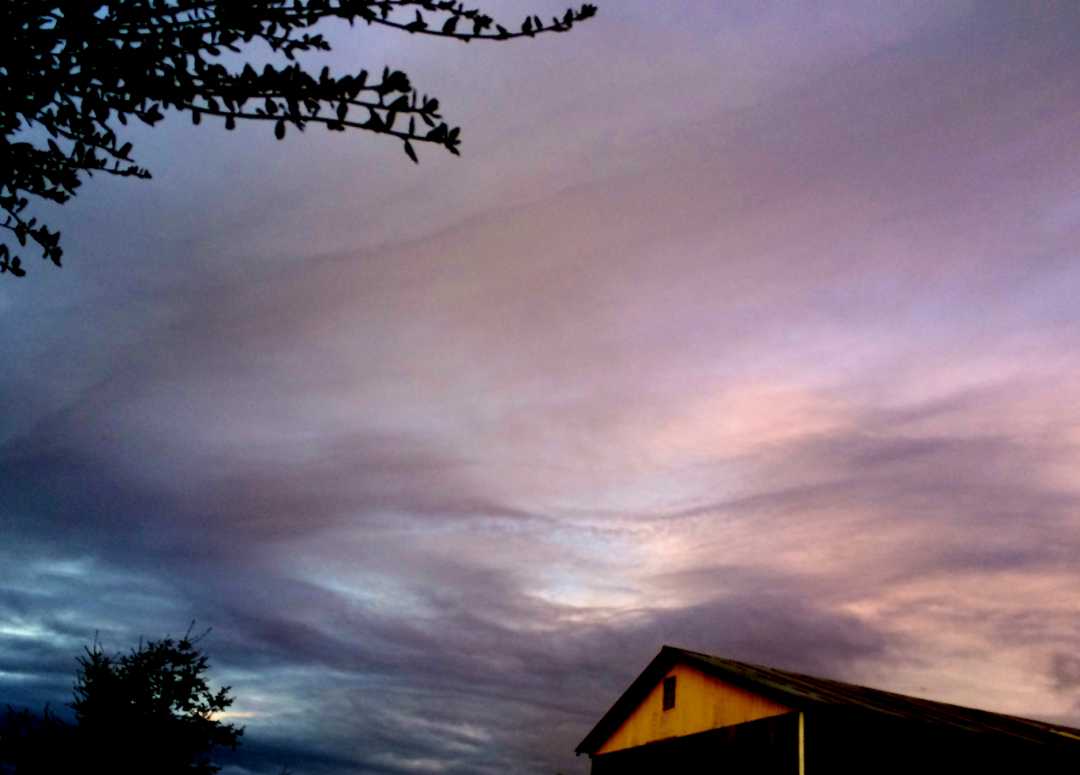





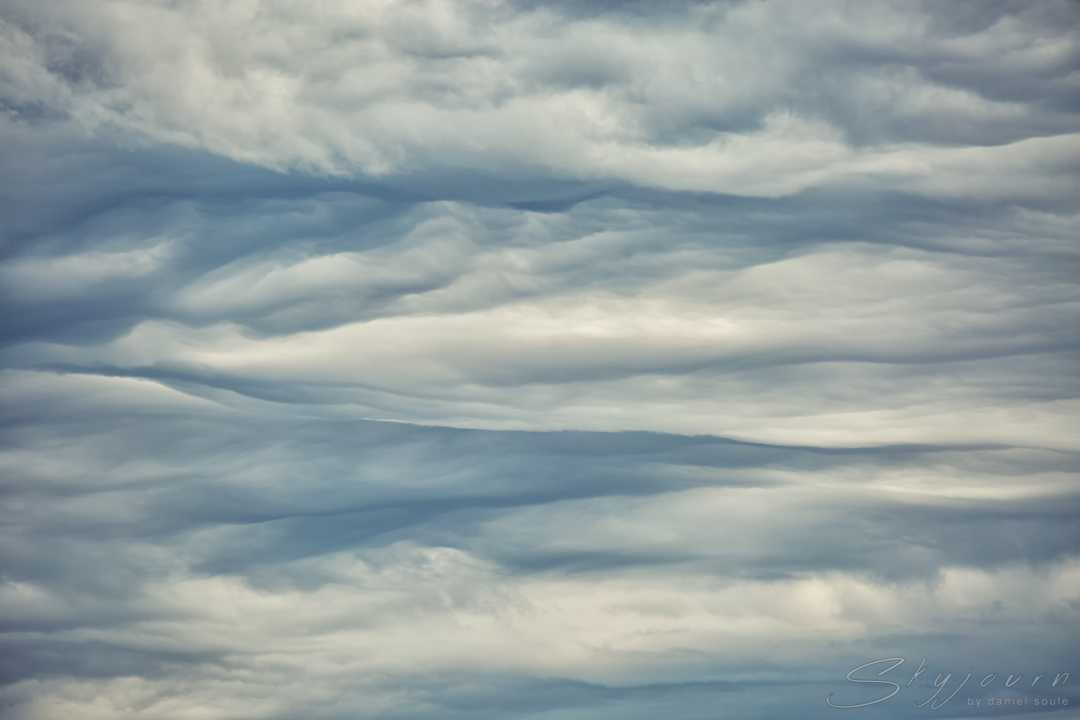
















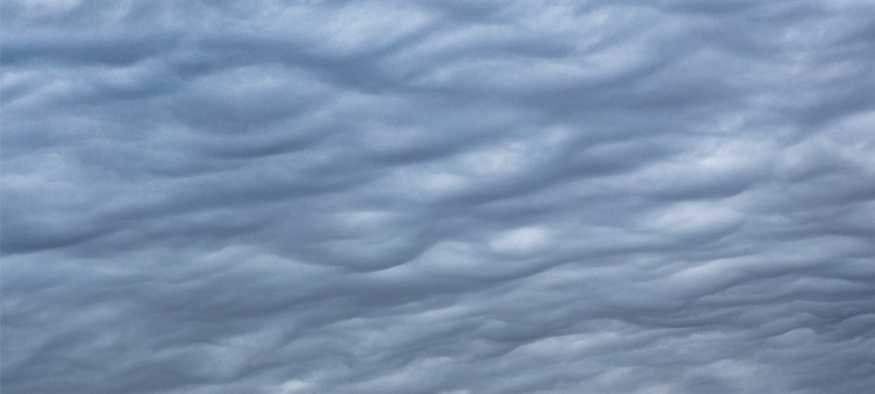




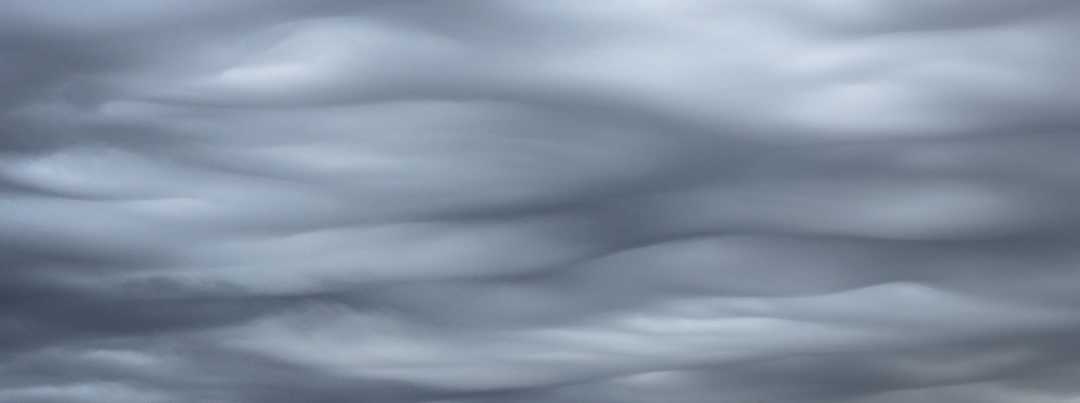
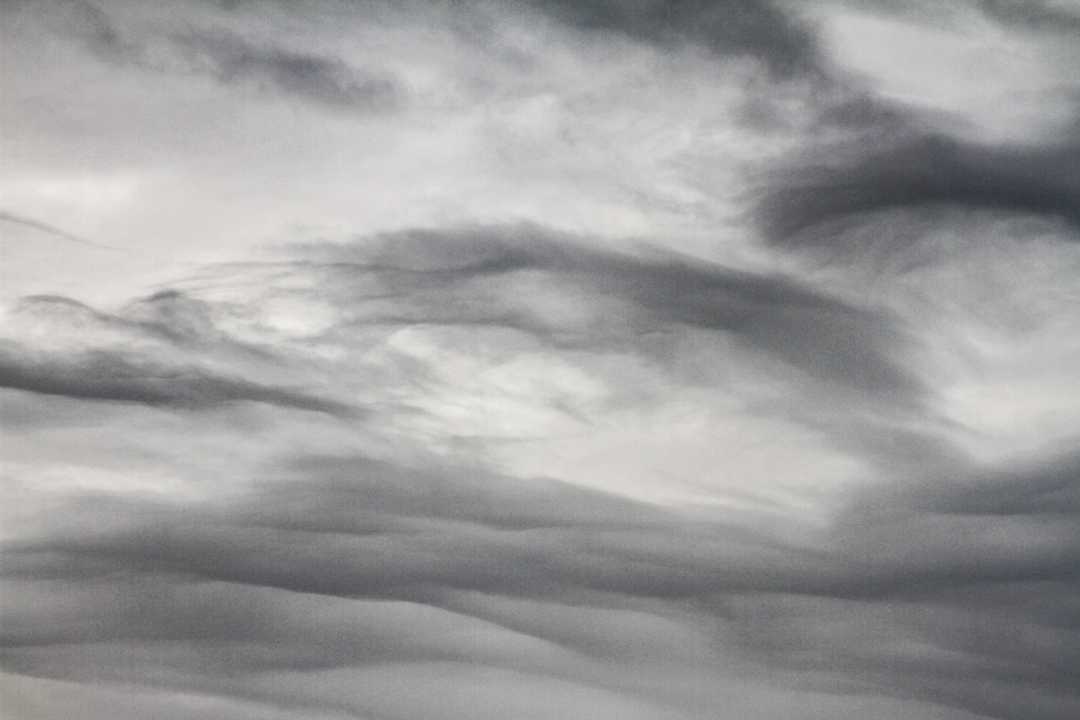
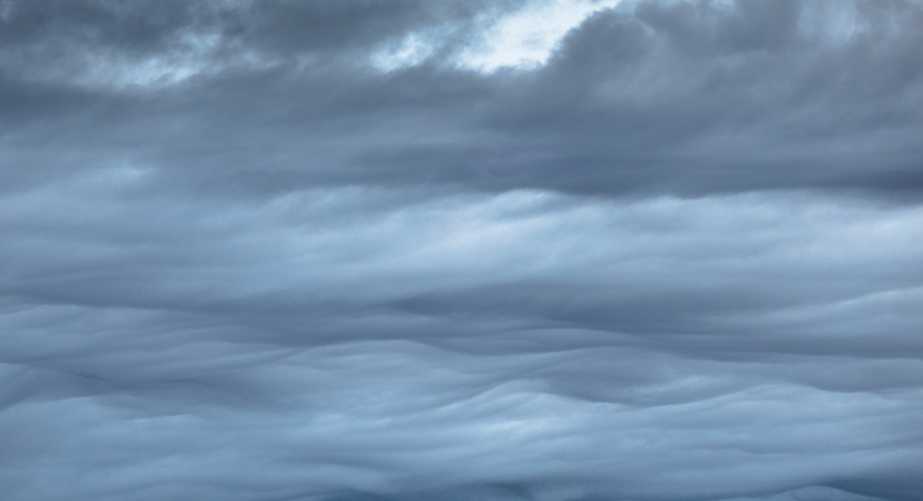





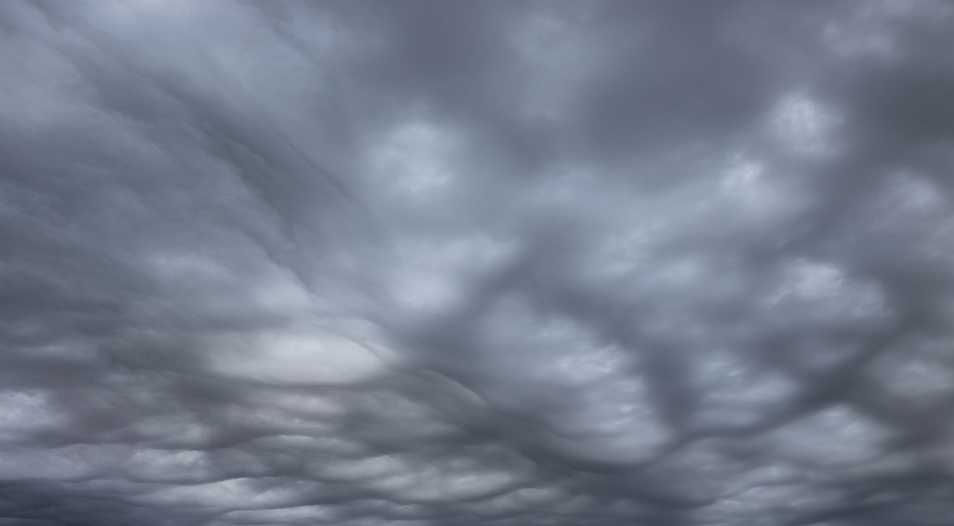






 Wondering if some of this cloud activity could have a bit of Asperitas. Thanks for any assistance.
Wondering if some of this cloud activity could have a bit of Asperitas. Thanks for any assistance.








